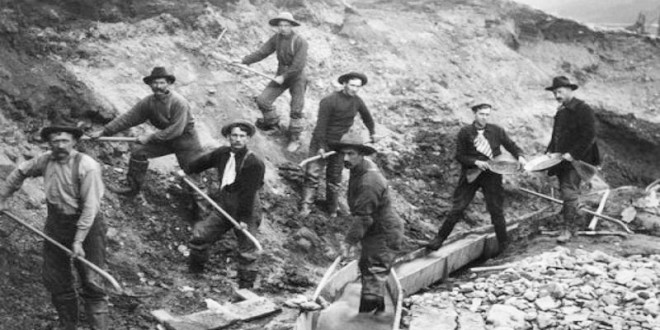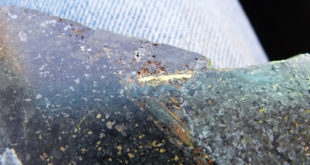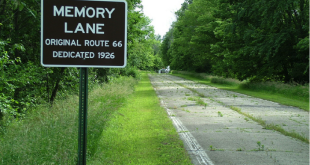Market comment:
Fidelity Investments has a new advertisement on CNBC in which Peter Lynch, Vice-
Chairman, states that since WWII, “corporate profit is up 60 fold and the market is up 60
fold” and “that’s why you invest in the stock market”. Well Mr. Lynch, I pity the poor fool
who has held Bethlehem Steel and Polaroid for the last 55 years to their respective bitter
ends. If you weren’t a very sophisticated investor you might be beguiled into thinking if you
too hold stocks for a couple of decades at least, you’ll be a big winner – though the chances
are equally good, if not better, that they will be wallpaper. To be a winner in the market long
term (decades) is to be able to anticipate trends and switch strategies – hard enough for the
individual to do, near impossible for fund managers, especially if they are sector specific.
Many funds concentrate on blue chips, as poignantly were Polaroid and Bethlehem at one
time. What most people in the investment industry want you to do is stay fully invested in
the market, pay your brokerage fees and management fees, and for heaven’s sake not buy
physical gold. Most of them are not very keen on gold shares either, largely because the
options they received on their tech shares at the IPO are out of the money.
I said a few weeks ago that the world had been conned into believing the market drop after
the tragedy of September 11th, was a “bottom” and a “buying opportunity”. It will not be
until people stop robotically making contributions to 401K’s, and getting their investment
advice from the telly, that the back of this market will be broken. That time is almost upon
us. You see almost daily indications. For instance, yesterday, DaimlerChrysler announced it
is cutting 2700 jobs and taking a $330 million charge in the 4th quarter to try to return their
Freightliner truck division to profitability. This is not because Freightliner produces inferior
trucks, or can’t compete in the marketplace – it’s because there’s no demand. If there’s no
freight travelling on the roads there will be no demand for new trucks. Trucking must be one
of the most accurate bellwethers of where the economy is headed.
Earnings season is upon us once again, and like last quarter the focus is not on rewarding
companies that are actually making money and improving on last year or last quarter. The
reward goes to those that “beat the Street Estimate”; or do better than expectations. Of
course, that “estimate” is usually ultimately sourced back to the company itself. Pathetic isn’t
it? that it has come down to this.
I have heard two commentators say that the debt situation in Argentina is of little matter
because “the U.S. doesn’t do much trade with Argentina”. According to a Bloomberg article
yesterday, “On Friday, Moody’s Investors Service cut Argentina’s credit rating to below any
other country, saying the government may be taking steps that will lead to a debt default”.
Wow. Does anyone remember what happened when Russia defaulted on part of its debt?
Remember the Long Term Capital Management debacle? Like it or not, the financial world
is an interconnected place, and there is no knowing how far the shock waves of any debt
default can travel. Brazil is Argentina’s biggest trade partner. Are they next? The Brazilian
Real has been plunging in recent days to a new all-time low against the dollar.
At the close of the quarter, the investment media had to acknowledge that gold funds
outperformed any other fund (except the hedge funds that shorted the market). A few
commentators have taken a swipe at the noble metal, but it is hard to deny facts. A week ago,
the Sunday edition of the New York Times even carried an article that recommended a 0.5%
to 6% weighting of an investment portfolio in gold. In Friday’s Wall Street Journal was an
article by Peter A. Mackay, “Gold Has Held at Steady Price Since Attacks, Despite Usual
Role as Haven Amid Uncertainty.” In the Brussels, European edition of the paper was the
same article, with the somewhat softer headline: “There May Be A Silver Lining In Gold’s
Price — U.S. Strikes Should Help Metal’s Shares Rise Steadily”. Today’s edition of the WSJ
had another article, also by Mackay, “Gold Stocks Fail To Glitter Despite Investors’ Worries
— Some Analysts, Though, See Room for a Steady Advance”. This article did not appear in
the U.S. edition. When the mainstream media starts to comment on the gold market, even if
it is to throw cold water on it, it must be a good time to get in. In the Canadian newspaper,
the National Post, was an article a week ago: “Muted response seen in flight to safe haven.”
Again, the article was half-and-half bullish/bearish for gold, but the point is that it appeared.
On the opposite page; the headline with regard to the general market: “Investors braced for
extreme volatility – fear of protracted hostilities will end rally, observers say”. These are sad
times, but in light of such juxtaposed headlines, gold will be increasingly considered as a
potential refuge.
The anthrax scare in America for some reason today reminded me of the ancient Persians,
who conquered the impregnable Egyptian city of Pelusium in 525 BC by flinging dead cats
over the city walls. The cat was supremely sacred to the Egyptians, and the strategy was
designed to cause both confusion and terror. Pretty simple tactics. To the Egyptians, it was
the lowest and dirtiest of dirty tricks. Most of the powder-laced envelopes will turn out to be
hoaxes, but it will probably cause enough concern to slow down both the mail service and
package shipping, perhaps to a crawl.
The retaliation to the Sept. 11th attacks by America and Great Britain has not resulted yet in
white flags above Kabul. We seem to be in for the long haul. The stock market in general
hates uncertainty, and these are very much uncertain times.
Historical Trends in Gold Discovery
Turning to a different topic, but no less important, I have recently been reading an interesting
article, “Fifty-year Trends in Mineral Discovery – Commodity and Ore-type targets”, by
Chris Blain, a consultant from Australia. The article appeared in the journal: Exploration and
Mining Geology, volume 9, number 1, pages 1-11, 2000. I think it is instructive to review
this article because it has information which is relevant to gold and gold investment in the
macroeconomic sense. There is a law in geology science called the “Law of
Uniformitarianism” which basically means “the present is the key to the past”. In this case, I
think we can reverse it and say the past is the key to the present – or the future.
Mr. Blain has analysed the worldwide discovery record for the last 50 years, compiled by
BHP Minerals. Grassroots exploration – that is, exploration carried out in “virgin” or
“frontier” areas is the route with the longest lead time. It can be a decade or more before
grassroots exploration yields mineable deposits. However, in some cases, discoveries come
quickly and in clusters, as new mining camps or provinces are discovered. Because geology
is a natural phenomenon, there’s never any guarantee that the first drill hole will find you the
mine. It usually takes time.
Commodity price cycles have a huge effect on the profitability of the mining industry over
time and influence investment patterns in exploration as well as levels of mine capacity. In
other words, in a multi-year decline, what is “ore” one year, may not be next year – “ore”
being defined as material which can be mined and milled at profit. Gold has been in a slump
since about the third quarter of 1996, with a few spikes. It is well below early 1996 levels.
When you add in the effects of the Bre-X fraud, uncovered in March, 1997, you have pretty
much a depressed market for the last 4 years. Venture or “risk” capital which has been
historically attracted to junior mining, moved to the tech and internet sectors.
Blain asks the question, “What discovery rates would be required if the industry had to
replace reserves at the current rates of production, by new grassroots discoveries?”
His calculation: In gold, fifteen, 5 Million ounce gold deposits annually (assuming a $25/oz
discovery cost, and a $50/oz development cost, such deposits would need to sustain a
production cost of <$150/oz).
The bar had been moved now since Mr. Blain completed his study, with a price currently
hovering between $280-$290 – but not by much. Over the last 3-4 years, the discovery
record by grassroots exploration has been almost zilch, though according to the World Gold
Council, demand for the metal has been climbing and climbing. Most of you are aware of
this situation. At some point, scarcity factor has to bite, even with Central Bank sales. What
Central Banks of course can’t directly influence are worldwide gold reserves still in the
ground. These are obviously being consumed and not replaced.
The record shows that historically, gold discovery patterns are episodic or cyclical rather than
continuous, in a series of waves or booms, portraying a cycle and resurgence. The boom in
discovery from 1980 through 1989 was price-led, in response to all-time highs in the gold
price. A second boom from 1995-1998 was also price-led to some degree, but was also
fostered by the opening up of frontier areas and a switch by companies to global exploration
strategies. The development of heap-leach recovery technology in the 1980’s also helped, as
it made possible the exploitation of lower grade ores.
Looking at where discoveries were made – it is an old adage amongst geologists “the best
place to find a mine is within site of a headframe” (for the uninitiated, a headframe is a shaft
house where the winding gear that lifts and lowers the ore buckets is mounted. It’s usually a
few stories high.) Over the last 50 years, “greenfields” discoveries in virgin terrain have
exceeded “brownfields” discoveries (those near existing mines), in terms of value. Why?
Because, what we term as “giant” ore deposits – the huge and super-lucrative ones that can be
mined using economies of scale – are most often found in frontier areas. As search terrains of
the world progressively reach maturity, the numbers of greenfields areas will obviously
decrease, but we are still a long way from running out of frontier areas. Brownfields
exploration is less risky and usually less costly. Also, gold occurrences usually cluster
together, so there is a good chance of finding gold near an existing mine. Promoters also
know well that there’s a good chance of finding at least some gold – whether in economic or
subeconomic concentrations – near existing or past-producing mines. If you don’t find
anything at all in a virgin area, it can be near impossible to raise additional exploration funds.
This is not an option for juniors in survival mode.
The chances of finding a giant ore deposit in a mature mining district are virtually nil. So
here’s the quandary – most of the junior companies that have been in cash conservancy mode
for the last 4 years, if they are looking at all, it might be in areas that are going to be
uneconomic at current prices. Frontier exploration offers a greater reward, but represents
greater risk of not finding anything. Those very few rare companies that are out there
carrying out grassroots exploration, if project goals are realistic and adequate funding
available, have the field virtually unopposed.
Rising capital costs of production over time have made it more expensive to carry out a
mining operation. “Only real lasting profit-making opportunity stems from resource quality –
those giant high-grade ore bodies that sit at the bottom of the cost curve.”
Think Barrick’s La Pierina, and Newmont’s Yanacocha. Two of the lowest cost mines out
there, with all-in costs below $100 per ounce. If gold exploration is price-led, then a
sustained higher price lowers the risk that a given new discovery will be uneconomic.
Mr. Blain concludes:
“As in the past, there will be successful companies who can discover or otherwise access
giant orebodies cheaply. It is likely that the successful companies will consistently
outperform the industry as a whole. The successful companies will require a superb quality
technical team operating with commercial skill and business discipline.”
At the current gold price, in the $280-$290 range, it is unlikely that a given grassroots
exploration project will result in an economic discovery. However, the time lag between
exploration and mine development is typically a minimum of 2-3 years. It takes time to do
engineering studies, build infrastructure, get environmental permits, etc. If it is anticipated
that we will see a gold price in the $330-$350 range within a year’s time, as some analysts
predict, then the entire situation will change. It remains to be seen if companies with vision
and foresight will enter into exploration anew and get ahead of the pack. Certainly, within 3-
4 years’ time the major gold producers will be hungry for new reserves. Perhaps those that
do start their exploration now will find their timing is perfect.
Lesson for the Week: Gold Salting
Salting: The fraudulent adulteration of a sample, for example, adding a small amount of gold to a sample to make it appear that the gold content of the rock is much higher than it actually is.
First of all let me say, in my professional career I have never witnessed an act of salting. The
stories though – most of them apocryphal – travel far and wide, and perhaps give the wrong
impression that it is commonplace. The truth is completely opposite.
The most crude examples of salting are by using ground up coins or precious metal filings to
salt samples. Mark Twain in “Roughing It” talked about a mine which contained native
silver. On close inspection one of the lumps had “TED” written on it – as in Uni”TED”
States of America. A few years ago, Timbuktu Gold Corp. allegedly used shavings from
Krugerrands to salt samples. Gold coins are usually alloyed with copper, silver and other
trace metals in precise quantities to enhance their durability. The precise compositions of
gold from Krugerrands, Gold Eagles, 50 Mexican Pesos etc. are known to Interpol and all law
enforcement agencies. Other coins like the .999 Canadian Maple Leaf are too pure to be used
for salting. Gold always occurs as a natural alloy, usually specific to a deposit type, a gold
district, a mine, or even parts of a mine. In South Africa, this knowledge has been used with
great advantage by law enforcement to trace contraband gold that has been stolen by workers.
The analytical fingerprint is not as good as DNA analysis for tracing we humans, but serves
the same purpose.
The Bre-Ex salting was a bit more sophisticated. Samples of pulverised drill core were
spiked with fine-grained alluvial gold – that panned by local natives from streams. Varying
amounts of gold were added to provide variability in assay values – to have them uniform
would alert suspicions. Gold from epithermal deposits, which are those connected with some
sort of extinct hotspring or volcanic activity, typically contain a lot of silver. Natural goldsilver
alloy is also known as electrum. In the presence of oxidising surface river water, the
silver gets leached away, so that the surface of a nugget is often much purer in gold than the
interior. Using an analytical device called an electron microprobe you can produce cross
sectional pictures of the gold grains. Those with the telltale gold-rich rims are always alluvial
in origin. The technique works so well that one of the high tech tricks we use to locate gold
deposits is to examine the gold panned from streams and see how deeply the gold has been
leached – nuggets with only thin rims of silver-poor gold haven’t been in the stream long
enough to be leached, nor have travelled downstream, and are therefore close to their source.
In the case of Bre-X the gold rich rims and the grain shapes gave the game away. There
shouldn’t have been any rims at all.
I’ve heard two other purportedly true stories – a person in Papua New Guinea attempting to
interest a major company in its property said there was abundant alluvial gold on the site. He
dug a few shovelfuls of gravel from a stream bank and gave it to a worker to pan. The
worker squatted in the stream, intent on washing the contents of his pan while puffing away
on a cigarette. In a few moments he was able to show a nice flash of gold along the bottom
of the pan. My friend took a pan of gravel, an experienced panner himself, he couldn’t
duplicate the result and got no gold. “You’re not doing it right”, said the worker, who
grabbed the pan away and again produced a nice tail of fine gold in the pan. “Let me see that
cigarette!” said my friend. He snatched it from his mouth. It was a “roll your own” type, and
sure enough amongst the tobacco were fine gold particles. As the ash dropped from his lit
cigarette into the pan the gravel became “salted”.
Drill core samples are cylindrical pieces of solid rock. Typically, in a sampling operation the
rock is split in half; one half is sent to the lab, the other is retained as a check, perhaps to be
analysed later by a different lab. There is an old tale of persons with a soft gold wedding ring
intentionally scraping it along the core to leave a trace of gold behind. This is probably
nothing more than a story. A true tale though is that of the geologist who was sent in to
review a project and found abundant gold on the walls of an adit, or horizontal mine tunnel.
Close examination showed that the gold could be flecked off with a penknife. Smelling a rat,
the geologist dug a shovelful of dirt from the floor of the tunnel and crudely panned it down
using the business end of his shovel in a deep puddle at the adit opening. In no time at all he
recovered more gold, and a handful of flattened lead shot. The gold had been added to
shotgun shells and “shot” at the walls!
It is part of good corporate governance that project managers ensure sample repeats are
performed, that “check samples” (those of already known gold content) are randomly and
anonymously inserted into the sample stream to make sure the analytical lab is staying
honest, and that for really important drill holes, chain-of-custody third party sampling be
carried out. Chain-of-custody sampling is similar to the gathering of forensic evidence at a
crime scene. As samples are transported from the field to the lab an unbroken record is kept
of persons who have come in contact with the samples. These persons have responsibility for
the integrity of the samples. If problems arise, they become legally culpable.
Sample adulteration is usually something easy to spot, and even easier to trace to the
perpetrator. All mining companies should be vigilant to ensure the opportunities for salting
never present themselves.
*****
Straight Talk on Mining is provided for information purposes only. Nothing herein is to be
construed as a recommendation to buy or to sell any particular security or financial
instrument. Nothing herein is to be construed as a recommendation to engage in any
particular investment strategy or trading strategy.
The investments discussed herein may be unsuitable for investors depending on their specific
investment objectives, financial situation, and risk tolerance. Private investors should obtain
the advice of a qualified financial advisor before entering into any transaction.
Straight Talk on Mining is based on information that is generally available to the public. The
sources used are believed to be reliable, but because the information and data that they
provide are beyond my control, no representation is made that it is complete or accurate.
References to other publications and direct links to external Internet sites are sometimes
given. The inclusion of any publication, organization or Internet site herein does not imply
any endorsement. Straight Talk on Mining has no control over the content of any Internet
site that you may reach through links that are provided, nor can their truth, accuracy, or
completeness be vouched for.
Straight Talk on Mining is not a financial services company nor is it affiliated with any
financial service company in any jurisdiction.
The author/publisher, Dr. Keith M. Barron, is not a qualified financial advisor and is not
acting as such in this publication. The accuracy of any legal term or definitions used herein
should be verified with your legal advisor or the appropriate government agency.
 Straight Talk On Mining Insights on mining from economic geologist Dr. Keith Barron.
Straight Talk On Mining Insights on mining from economic geologist Dr. Keith Barron.




